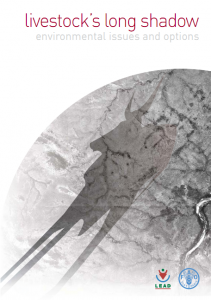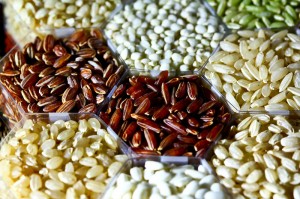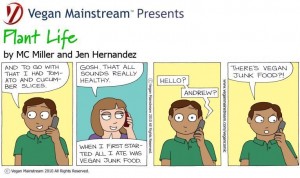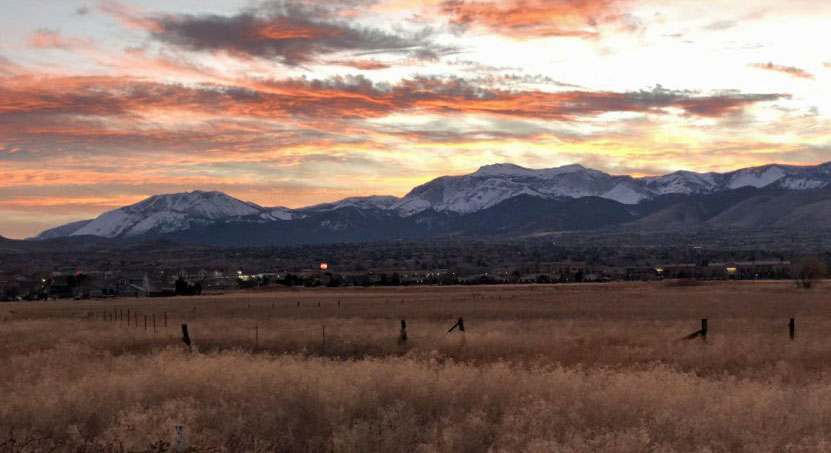As a recent transplant to Nevada (and that’s Nev-AAH-da, rhyming with the A in “cat”; Nevadans are very touchy about this), there are a few cultural differences that have struck me as a native to the East coast. People are … nice? And polite, usually? It’s been a tough adjustment. One thing that particularly stuck out is how many personalized license plates there are. I saw my first couple, chuckled or rolled my eyes, and continued on. Then I saw more. And more. And more. Nevadans apparently love to show their ~*~pErSoNaLiTy~*~ via their VANITYPL8s. And it’s not just the numbers themselves. Continue reading
Conscious Burning
In 6 years of working at a membership-only pool, I’ve come to notice many things that bother me about how the members treat the club and our staff. So in order to help you potential pool and beach-goers avoid pissing off people like me, I’ve compiled a short list of things that bother me and how they can be remedied! Read more and pay attention! Continue reading
My heart was pounding as I walked toward the mostly-unmarked side door of the building. I always get overly nervous when going to something alone for the first (or fifth, or sixth) time. I wound through parents waiting for their kids and entered the pool area, and luckily saw two people who looked like they were there for the same thing I was. “Hi, this is my first time and I don’t know anything”- I like to lay the facts on the table from the get-go. The woman, who definitely knows stuff, chuckled and pointed me to the women’s locker room, warning me of the hoard of under-10s in there. I decided to brave it, temporarily deafened by their heedless shrieking and screaming (I don’t think it was at me), and I headed straight for the toilet stall. I started to take my things out of my backpack, and quickly found there was not nearly enough room in there. I put my bathing suit and rain jacket on top of the toilet paper dispenser, then turned to take off my shoes. I heard a splash. My rain jacket had fallen on the ground, but my bathing suit fell in the toilet. Which some girl had not flushed. Well this is starting out smoothly, I thought. I was at once cursing and praising myself, because I had had the forethought to bring an extra bathing suit. This I put on immediately and kept everything away from that dastardly toilet. Most of the girls had left so I got out, put my things in a cubby, and headed out to the pool.
There were more people there now, including a guy who was wearing regular clothes, so I took him to be the coach. I introduced myself, quickly telling him I had bunion surgery so had not really moved in four months (it was really more, but I could only blame four of those months on the surgeries). I told him I had never swum competitively but had swum a lot in general and had always been fairly active. He sent me over to lane 1 and told me to start out with some freestyle. “All right,” I thought, “at least I’m good at freestyle.” The coach quickly put to rest my delusions of greatness, or at least of minor ability. I probably shouldn’t have told him I taught swim lessons for the last four years, I think it worried him after he saw me swim.
Anyway, a couple laps in I’m feeling good, lost count of how many laps I’ve done and how many I’m supposed to do, and he stops me. I’m excited for the guidance and opportunity to improve my technique. “Your kick is good,” he says, “but you need to push your arms through the water instead of letting them just drag along. Keep your hands closer to your body and rotate more, really reaching your hands out before they enter the water. And look ahead of you a bit as you swim, not straight down.” So I say okay, lower my goggles, and get ready to go. I’m mostly focusing on pushing the water with my hands, and I really start to feel it in my upper arms. I do probably another hundred yards like that and stop to rest. Everybody else has stopped swimming so I guess they all finished whatever we were supposed to be doing. The coach tells everyone to do a 3-2-1, whatever that means, and luckily he comes over to me. “You were pushing more, but you still need to lift your head up.” “Oh, right,” I say, “I forgot about that.” “Do another 300 of freestyle.”
Lap one, reach out, rotate, lap one, push back. Oops, gotta breathe. Lap one. Reach out, rotate, push back. This is going okay. Lap one. Oh right, look forward. Wait, now I’m not pushing back. Lap one. Push the water back. Oh, there’s the wall. Flip-turn, oh-I-really-should’ve-taken-a-breath-before-that, lap two. Look forward, reach arms forward, lap two, push the water back. I’m feeling good, my triceps are burning, and eventually I complete the 300 yards. The coach comes over. He looks disappointed. “You’ve got to push the water harder. I really want to see almost a small explosion as your arms come back. You’re taking almost 27 strokes per lap, when you should be doing 18 or 20.” “Okay,” I say, and I get ready to start swimming. Over the next few laps, my mind is a jumble of counting strokes, laps, and remembering to breathe, to reach out, look forward, push the water, and rotate. I eventually find that counting the strokes makes me automatically do many of the things he told me to do, which serves to tire out my poor tiny arms quickly. I take breaks, pretending I’m adjusting my goggles. The lowest I get is 22. I might have done 21 once. He has us all do an IM (butterfly, backstroke, breaststroke, and freestyle)- I got through maybe half a lap of a barely-recognizable butterfly. I was glad there wasn’t a lifeguard at the pool so they wouldn’t have thought I was drowning. The coach came over with ten minutes to go, telling me that I can take it easy now; I did more than he expected me to do. I’m happy to hear something good and make a note to set peoples’ expectations low at the next activity I do for the first time, so I can easily exceed them. He had us cool down with whatever stroke we liked- I picked freestyle, still trying to reach the elusive 18-stroke lap. It didn’t happen, even with my probable mis-counting.
It was time to get out of the pool, so I looked around for the stairs, or a ladder. I saw nothing. Feeling my jello arms and panicking, I attempted to get myself out of the pool. I could barely lift myself out. I pulled myself up enough to get my butt out, then kind of rolled over onto my knees. I was the epitome of grace. In the locker room I’d tell anybody I could about my bunion surgery. “It’s so nice to move again, even though I’m so out of shape because of the surgeries.” Yes, definitely because of the surgeries…
As I rinsed myself off in the shower and struggled to get my jeans back on, I was glad I went. Sure, I wasn’t entirely confident in my ability to turn my steering wheel just then, but eventually I’ll get stronger. Though all the swimming lingo and equipment is still very foreign and unintelligible to me, everybody there is really welcoming and encouraging. I’ve gone two more times to the Master’s swimming practices, and I’ve gotten more comfortable with the whole thing. Now I only have to resist the urge to buy obscenely colorful bathing suits!
Everyone appreciates a sweet and delicious treat. Everyone with functioning taste buds, anyway. One of the more common questions I get about being vegan is how I make things without eggs or cows’ milk. In fact, it’s actually very easy. Whether you want to impress your vegan friend or your non-vegan ones, here I’ll discuss the common baking substitutes and post a delicious cupcake recipe!
Milk
You can put almost any other kind of milk in place of cow’s milk. Soy, almond, rice, and hemp milk are all options. I would consider soy milk to be kind of “neutral” in taste when baking. Rice milk is somewhat thinner than the other kinds. I love using almond milk in baking, but if I think there might be someone with a nut allergy I’ll stick to the other kinds.
Butter/Margarine
Earth Balance is the best vegan margarine for your fake buttery needs. It’s non-hydrogenated, too, so it’s kind of better for you! It’s not always easy to find, so another option is Fleischmann’s unsalted margarine. For some reason their unsalted margarine is vegan, but the regular stuff is not.
Eggs
Eggs are kind of tougher than replacing cow’s milk or margarine. In general, your go-to egg substitute is Ener-G Egg Replacer, which can be found in Whole Foods and other health food stores. It’s largely made from potato and tapioca starch, and can be used in pretty much any recipe you have. One egg equals 1.5 teaspoons of Ener-G plus 2 tablespoons of water.
Ground flax seeds are very useful in baking, and you can pretend your cookies are healthy too! The best way to go with these is to buy whole flax seeds and grind them as needed. If you buy ground flax seeds, make sure to put the bag/jar in the freezer when you’re not using them to preserve the nutrients. One egg equals 1 tablespoon of ground flax seeds plus 3 tablespoons of water. This website has more info on using flax seeds as an egg substitute.
Silken tofu can be used as well, at a conversion rate of ¼ cup of whipped silken tofu for one egg. Silken tofu is good for puddings and pies, as well as cakes and whatnot you want to be a little thicker and more moist.
Other foods can be used to replace eggs, but the following ones will change the taste of whatever you’re making. Bananas are great to use (especially in recipes that involve chocolate!), as they are good binding agents. Applesauce can also be used in place of eggs, though I would say that this option generally does not help keep everything together as well as the other substitutes. Maple syrup can also be used to an extent, and is my favorite egg replacement when making pancakes.
Finally, as promised, one of my favorite cupcake recipes.
Chocolate Banana Cupcakes, from the Post Punk Kitchen
Ingredients:
- ¾ cup sugar
- 5 Tablespoons butter, softened
- 1 teaspoon vanilla
- 1 banana, mushed well
- 1 cup all-purpose flour
- ¼ cup unsweetened cocoa
- ½ teaspoon baking soda
- ¼ teaspoon salt
- ½ cup milk
1. Preheat the oven to 350ºF.
2. Combine the first three ingredients in a large bowl, mixing well.
3. Add banana, stirring well to combing. You might have to use your fingers to smush some of the larger chunks of banana.
4. Combine the flour, cocoa, baking soda, and salt; stirring well with a whisk.
5. Add the flour mixture to the sugar mixture alternately with ½ cup milk, beginning and ending with the flour mixture; mix after each addition.
6. Spoon the batter into 12 muffin cups.
7. Bake for 20 minutes or until the cupcakes spring back easily when touched lightly in the center.
8. Allow to cool, and frost if desired (I highly recommend a peanut butter frosting).
Enjoy!
On this day of binge-drinking and misguided attempts to show off your jigging skills, here’s an easy-to-make and delicious recipe for Irish Soda Bread. Soda breads use baking soda instead of yeast as a leavening agent, and as far as we know, were first introduced to Ireland in the 1840s. Irish soda bread traditionally has a cross cut into the top before baking, which may help it to rise and/or keep away the devil. You can do other designs though; whatever tilts your tea kettle!
The somewhat surprisingly irate people over at The Society for the Preservation of Irish Soda Bread contend that there is only one “true” form of Irish soda bread, and any additional ingredients are an abomination to the bread and humanity (actually only a slight exaggeration). Nevertheless, if you want to add raisins, nuts, gummi bears, or even some green food dye to your soda bread, I say go for it.
The following recipe is from The Joy of Vegan Baking, by Colleen Patrick-Goudreau. The milk and butter in the recipe can obviously be either vegan or not.
Ingredients
- 2 cups (470 ml) milk
- 2 teaspoons white distilled vinegar
- 4 cups (500g) flour (can be whole wheat, white, or a mixture of both)
- 1 teaspoon baking soda
- 1 teaspoon salt
- 1/4 cup butter, melted
Preheat the oven to 425ºF (220ºC). Lightly grease a round 9- or 10-inch cake pan [I just used a cookie sheet and it worked out fine]. In a small bowl, combine the milk and vinegar. Let stand for 5-10 minutes.

In a large bowl, mix together the flour, baking soda, and salt. Add the milk and vinegar mixture and the butter, and combine until you have a sticky dough. Knead the dough in the bowl or on a floured surface for 10 to 12 strokes [Err on the side of handling the dough less].
Place the dough in the pan, and cut a cross [or smiley face] in the top. Bake for 40-45 minutes, or until the bottom has a hollow sound when thumped. Cool slightly before smoothing.
Soda bread is delicious when toasted lightly and buttered, or dunked in some soup or sauce. Enjoy!
So you want to learn more about vegetarianism/veganism? Or you don’t, but this article came up and you’re procrastinating at work/school/life so you’ll read it anyway? Good enough! This is meant to be kind of a brief intro to what this stuff is all about, and will respond to some of the main questions that generally come up in this topic. If there’s a particular area of vegetarianism/veganism (veg*nism) that you would like to know more about, let me know! I love talking about this stuff.
The Basics
A vegetarian is someone who does not eat meat. They may still consume dairy, eggs, and possibly fish (but fish is really a meat). Vegetarians have been around forever!
A vegan is often defined as someone who “begins with vegetarianism and brings it to its logical conclusion.” Vegans attempt to consume nothing that originally came from an animal. This includes clothing, shoes, jewelry, cosmetics, and of course, food. The term was coined by Donald Watson, an Englishman who founded the British Vegan Society in 1944.
But Why?
If you’re a vegetarian or vegan, you’ll know that the question everyone asks you (along with the protein question) is “Why did you decide to become a veg*n?” People go veg for a variety of different reasons. The main ones:
For the animals
There is nothing “circle of life” about our modern production of meat. Animals are kept in terrible conditions for the sole purpose of being killed. This is generally where all the ethical arguments against eating animals live. Many people believe that there is no such thing as “humanely-killed” meat. Additionally, the principle of not using animals for our own gain (this can be extended to circuses, rodeos, and even pets) is often used in reasoning against using honey, pearls, and other things that we generally think of as not harmful to the animals.
For personal health
Eating more plants and fewer animals has been linked to lower cholesterol, higher fiber, lower rates of cancer, diabetes, h eart disease, osteoporosis, and a host of other health issues. For more info on this, see The China Study.
eart disease, osteoporosis, and a host of other health issues. For more info on this, see The China Study.
For the environment
Factory farming is incredibly damaging to the environment. Livestock’s Long Shadow (pdf file), published by the UN’s Food and Agricultural Organization in 2006, details the many harmful impacts that raising livestock has for the environment. One of the more interesting facts: all factors involved, livestock contribute more to greenhouse gas emissions than all forms of transportation.
ZOMG where do you get your protein?
I figure we’ll just tackle this one right off the bat. First of all, you probably don’t need as much protein as you think you need. The average American consumes about double the protein his or her body actually needs. (Source) So let’s just relax about that. The general formula to determine how much protein you need per day is your body weight times 0.36. So a 140-pound person would need about 50 grams of protein per day. Obviously if you’re an athlete and/or a pregnant or breastfeeding woman you’ll need more. Veg*ns can get protein from legumes, grains like rice and quinoa (kee-nwah), tofu, nuts, and non-dairy milks. However, it is true that while all meats offer complete proteins (they have the 9 essential amino acids which cannot be produced by our bodies), most vegetarian sources do not. Quinoa is one of the only plants that is a complete protein.
Aside from eating quinoa all day (which wouldn’t be the worst thing), us veg*ns can use what are called complementary proteins- where one source is missing an amino acid or two, another one has it, and when eaten together or during the same day, they complement each other. We already form complementary proteins in many of the foods we commonly eat: rice and beans, falafel in a whole wheat pita, peanut butter on whole wheat bread, cornbread and beans. Basically legumes + grains is a good way to go.

Some Random Nutrition Notes
Hopefully I’ll get to do a later post on veg nutrition, but for now a few brief things. Being vegan does not necessarily mean eating healthier. A lot of junk food is vegan (and delicious). But that’s not really what veganism is all about, so in between bags of Tings, have a leaf or something.
Even if you’re not looking to go veg, a good guideline for healthier eating is to eat the food as close to how it naturally is as possible. This means eating corn on the cob, not corn nuts. Using rolled or steel-cut oats rather than the instant oatmeal. Basically, when you go food shopping, you should look for food that has five or fewer ingredients listed, or better yet, just one! This way you can better ensure that you’re getting the most nutrition and the least processing possible in your foods. Now, I can’t ignore the cost issues here- it’s fucked up that buying junk food is less expensive than buying broccoli or something, but if you can try to eat more whole foods without going broke, it’s absolutely worth it for your body. Former Jezebel readers beware, but legumes seriously are the shit in this regard. They are cheap and incredibly nutritious. This doesn’t mean eating lentils for every meal every day, but maybe buy a bag of beans instead of that chicken breast. The larger societal and governmental issues of our food system can’t really be addressed right here, but I’ll include some links for those of you who want to read more on this (Food Inc. also addresses this issue).
So that about wraps this up. Do you have a particular food/meal you’d like to share with the group? Good books, articles, films, etc.? Let us know in the comments!
But I want to know more!
Complementary proteins
Sources of protein
Wikipedia on Veganism
Physician’s Committee for Responsible Medicine protein info
Vegan Action
Vegans of Color
Racism & Speciesism
Mark Bittman, Food Matters (lots of good information)
Compassionate Cooks
Carbon Footprint Calculator

